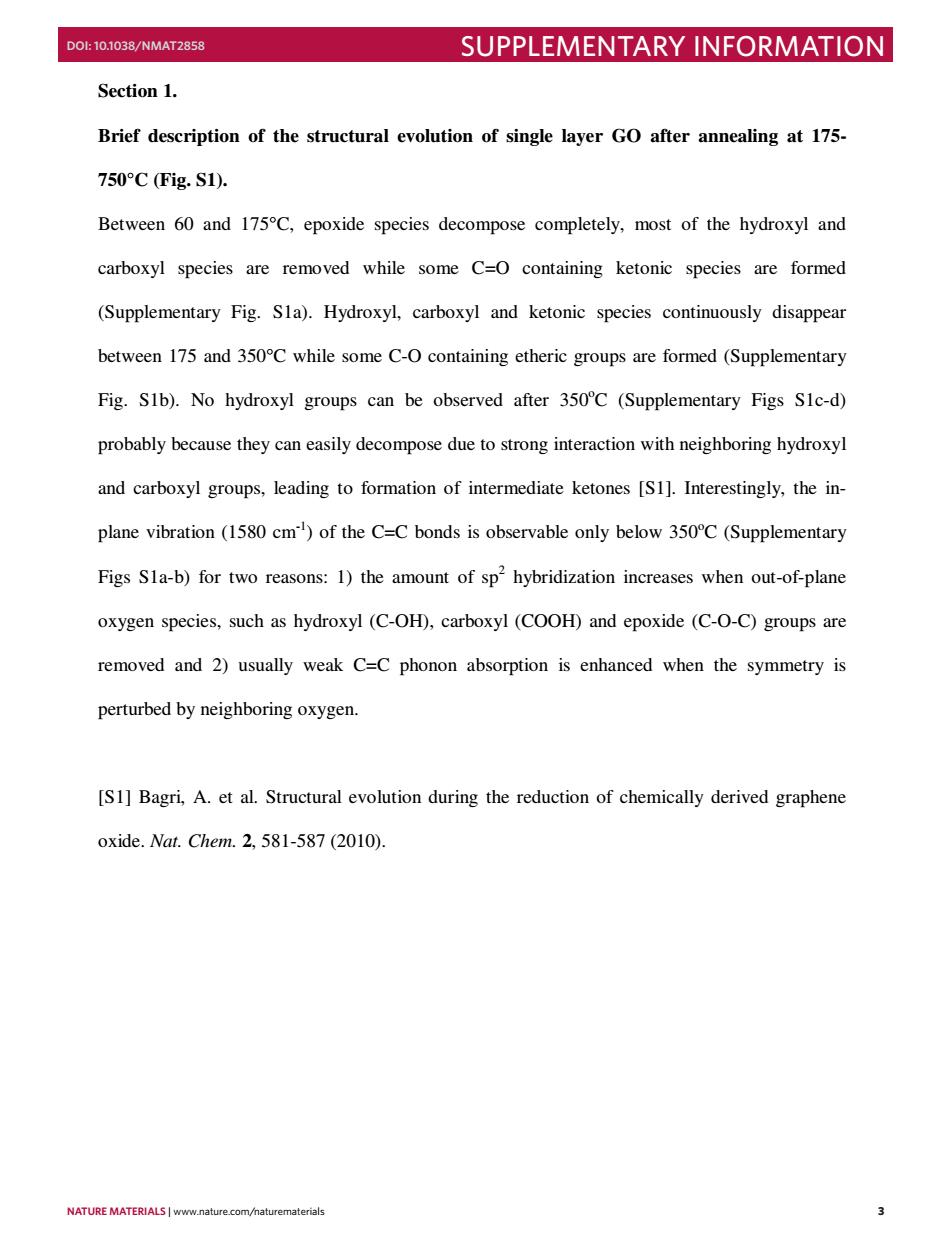正在加载图片...

DOE:10.1038/NMAT2858 SUPPLEMENTARY INFORMATION Section 1. Brief description of the structural evolution of single layer GO after annealing at 175- 750°C(Fig.S1). Between 60 and 175C,epoxide species decompose completely,most of the hydroxyl and carboxyl species are removed while some C=O containing ketonic species are formed (Supplementary Fig.Sla).Hydroxyl,carboxyl and ketonic species continuously disappear between 175 and 350C while some C-O containing etheric groups are formed(Supplementary Fig.S1b).No hydroxyl groups can be observed after 350C (Supplementary Figs S1c-d) probably because they can easily decompose due to strong interaction with neighboring hydroxyl and carboxyl groups,leading to formation of intermediate ketones [S1].Interestingly,the in- plane vibration(1580 cm)of the C=C bonds is observable only below 350C(Supplementary Figs Sla-b)for two reasons:1)the amount of sp2hybridization increases when out-of-plane oxygen species,such as hydroxyl(C-OH),carboxyl(COOH)and epoxide (C-O-C)groups are removed and 2)usually weak C=C phonon absorption is enhanced when the symmetry is perturbed by neighboring oxygen. [S1]Bagri,A.et al.Structural evolution during the reduction of chemically derived graphene oxide.Nat.Chem.2,581-587(2010). NATURE MATERIALS www.nature.com/naturematerialsnature materials | www.nature.com/naturematerials 3 doi: 10.1038/nmat2858 supplementary information 3 Section 1. Brief description of the structural evolution of single layer GO after annealing at 175- 750°C (Fig. S1). Between 60 and 175°C, epoxide species decompose completely, most of the hydroxyl and carboxyl species are removed while some C=O containing ketonic species are formed (Supplementary Fig. S1a). Hydroxyl, carboxyl and ketonic species continuously disappear between 175 and 350°C while some C-O containing etheric groups are formed (Supplementary Fig. S1b). No hydroxyl groups can be observed after 350o C (Supplementary Figs S1c-d) probably because they can easily decompose due to strong interaction with neighboring hydroxyl and carboxyl groups, leading to formation of intermediate ketones [S1]. Interestingly, the inplane vibration (1580 cm-1) of the C=C bonds is observable only below 350o C (Supplementary Figs S1a-b) for two reasons: 1) the amount of sp2 hybridization increases when out-of-plane oxygen species, such as hydroxyl (C-OH), carboxyl (COOH) and epoxide (C-O-C) groups are removed and 2) usually weak C=C phonon absorption is enhanced when the symmetry is perturbed by neighboring oxygen. [S1] Bagri, A. et al. Structural evolution during the reduction of chemically derived graphene oxide. Nat. Chem. 2, 581-587 (2010)